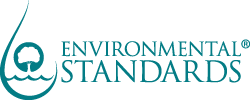The US EPA is currently in the process of updating and streamlining the existing Fuels Regulations to help reduce compliance costs for stakeholders and US EPA, while improving overall compliance assurance. Discussion of these draft regulations is available on the US EPA website, April 2019 Fuels Regulatory Streamlining Discussion Draft Regulations.
As part of the Clean Air Act, US EPA is required to regulate fuels and fuel additives, such that any emission products do not cause or contribute to air or water pollution that may endanger the public health or welfare. Specifically, the Gasoline Regulations, contained in 40 CFR Part 80, establish programs to reduce ground‑level ozone (i.e., smog), particulate matter (PM), air toxics, and carbon monoxide (CO). Diesel fuel has been similarly regulated to reduce soot or PM; oxides of nitrogen (NOx), which contribute to the production of smog and acid rain; hydrocarbons; CO; and air toxics.
The main form of demonstration of compliance to the Fuels Regulations is through careful sampling and testing at the refinery or other the point of compliance. Perhaps somewhat unique to the Fuels Regulations, is the incorporation by reference of ASTM analysis and sampling procedures as regulation.
For example, the gasoline programs established in 40 CFR Part 80 include:
Sulfur Content
Limits the sulfur content in gasoline, which allows for cleaner burning fuel and use of advanced emissions control technologies in cars and trucks (see ASTM D2622, D4294, D5453, and D6920 for diesel and D3120, D5453, D6920, and D7039 for gasoline).
Air Toxics
Limits the content of toxic chemicals in gasoline (i.e., benzene; 1,3-butadiene; formaldehyde; acetaldehyde; acrolein; and naphthalene; see ASTM D86, D1319, D3606, and D5769).
Reformulated Gasoline
Requires gasoline to meet more stringent specifications resulting in reduced emissions of the pollutants that contribute to smog and PM pollution (see 40 CFR 80.46).
Reid Vapor Pressure
Requires use of formulated gasoline with reduced volatility, which evaporates less at higher temperatures, reducing emissions of the volatile components that result in higher levels of smog, in the hot summer months (see ASTM D4815, D5191, and D5599).
Winter Oxygenates
Requires the addition of oxygenates to gasoline in the winter, which increases combustion efficiency during cold weather, reducing emissions of CO (see ASTM D4815 and D5599; and D7754 proposed for use in California).
Sampling typically occurs at tanks, through taps or tank-top sampling techniques (see ASTM D4057 and D5842), or at pipelines using automated composite samplers (see ASTM D4177). In addition to specifications for sampling and analysis procedures, there are also requirements to establish robust quality control procedures (see D6299) contained in the Fuels Regulations.
Environmental Standards has provided sampling and testing consultation, as well as auditing services, for both internal and external laboratories for over 30 years. Please feel free to contact one of us if you need support or would like an external review.



